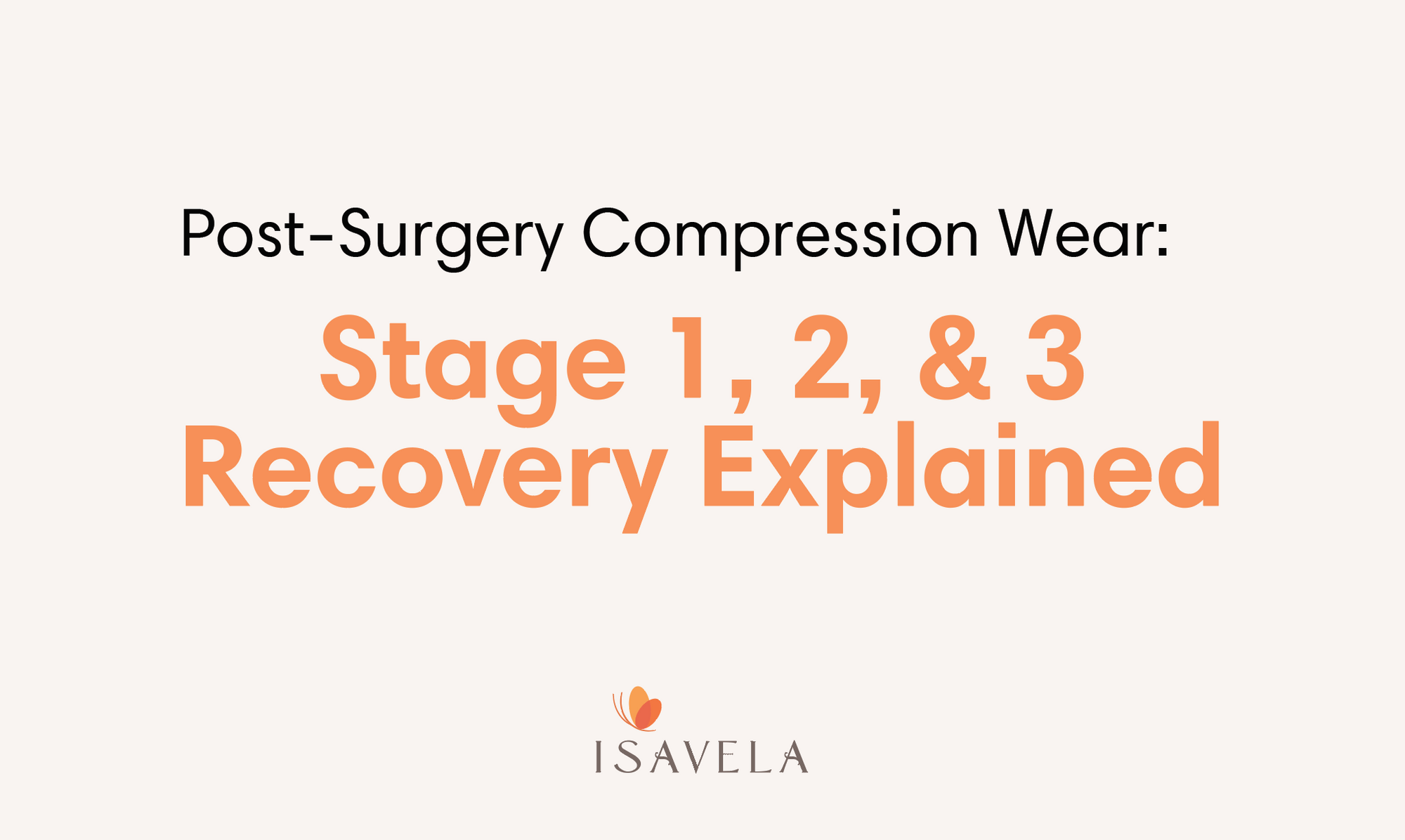Understanding Compression Garment Stages: What to Wear and When
If you’re preparing for cosmetic or reconstructive surgery, you’ve probably heard your doctor mention “Stage 1” or “Stage 2” compression garments—or maybe even a “Stage 3.” But what do these terms really mean? And how do you choose the right faja for each step of recovery?
In this guide, we break it down stage by stage so you know exactly what to expect and wear.
Stage 1 Compression: Right After Surgery
When to wear it: Immediately after your procedure and for the first 0–2 weeks
Purpose:
Stage 1 compression garments are designed to support your body during the most sensitive part of recovery. At this stage, your body is swollen, healing, and adjusting to the changes made during surgery.
These garments typically feature:
-
Soft, breathable materials
-
Open crotch or accessible designs for ease of use
-
Gentle to moderate compression
Think of Stage 1 as the recovery essential that helps minimize swelling, prevent fluid buildup, and stabilize your new shape—without feeling restrictive.
👉 Explore our Stage 1 Garments
Stage 2 Compression: The Next Phase of Recovery
When to wear it: Around 2–6 weeks post-op (or as advised by your doctor)
Purpose:
Stage 2 fajas offer more compression than Stage 1 and help contour your body as swelling decreases. This stage focuses on refining results, maintaining shape, and boosting blood circulation as healing continues.
Stage 2 garments are usually:
-
Tighter-fitting with stronger compression
-
Seamless or lace-free for comfort under clothing
-
Designed to be worn throughout the day under regular outfits
At this point, you’re healing—but not done yet. Think of Stage 2 as the compression layer that smooths everything into place.
👉 Browse our Stage 2 Collection
Stage 3 Compression (Optional)
When to wear it: After your doctor gives the green light—typically beyond week 6
Purpose:
Stage 3 isn’t always prescribed, but some patients prefer continued support long after the initial recovery period. Whether for workouts, daily use, or special occasions, these garments can help maintain results and keep you feeling supported.
Stage 3 fajas are:
-
More flexible in style
-
Often designed for long-term use
-
Ideal for shapewear-level compression
Choosing the Right Faja for Each Stage
Everyone’s recovery is different. Always follow your surgeon’s advice on how long to wear each garment and which style fits your body and procedure best.
At Isavela, we design each garment with your healing journey in mind—offering comfort, compression, and confidence through every phase.
Frequently Asked Questions
How long should I wear each stage of compression garment?
Always follow your doctor’s recommendations, but here’s a general guideline:
-
Stage 1: Worn immediately after surgery for 1–2 weeks
-
Stage 2: Worn from weeks 2–6 (or longer)
-
Stage 3 (optional): After 6 weeks, if continued support is needed
Your healing timeline may vary based on the procedure and your body’s response.
Can I skip Stage 2 and go straight to Stage 3?
We don’t recommend skipping stages unless advised by your surgeon. Each stage is designed to meet specific recovery needs—Stage 2 helps with shaping and reducing swelling after the initial healing phase.
How do I know if I need a Stage 3 garment?
Stage 3 garments are optional and not always required by doctors. Some people choose to wear them for added support during workouts, everyday shapewear, or for enhanced comfort after recovery is complete.
What’s the difference between Stage 1 and Stage 2 compression?
-
Stage 1 fajas are gentler, more flexible, and often open-crotch or zipper-based for convenience.
-
Stage 2 fajas offer more compression and a sleeker fit, making them ideal for wearing under clothes once swelling subsides.
How tight should my faja feel?
Your garment should feel snug, but never painful or restrictive. If you're uncomfortable or your movement or breathing is affected, the garment may be too small. When in doubt, size up or ask your provider.
Can I wear my faja while sleeping?
Yes, especially during Stage 1 and Stage 2 recovery. Most doctors recommend 24/7 wear for the first few weeks, removing the garment only for short hygiene breaks or as advised.



